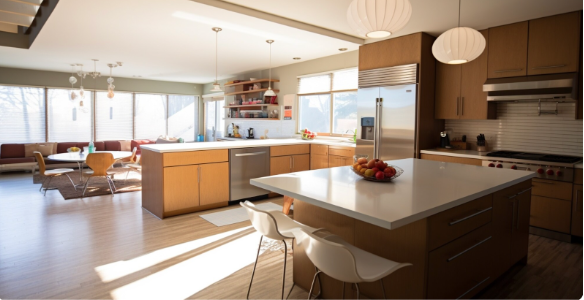Dampness in walls is a common problem that many homeowners face, particularly during the monsoon season. This issue can lead to various challenges, such as peeling paint, leaks, and an overall gloomy atmosphere in your home. Prolonged exposure to moisture can cause serious damage to your walls and the structure of your house, making it essential to prevent damp walls effectively.
Dampness in walls can occur due to several reasons, including moisture from the ground rising above ground level, splashing rainwater causing water leakage, sloping roofs collecting water that can percolate into your home, and blocked drainage pipes collecting water and causing damp walls. Understanding the root causes of dampness is crucial in developing effective prevention strategies.
In this comprehensive guide, we will explore proven solutions to help you master the art of preventing dampness in walls. We will delve into the various methods and techniques that can be employed to safeguard your walls and maintain a dry, healthy living environment. From identifying and sealing cracks to applying exterior waterproofing coats and installing damp-proof courses, we will cover a range of strategies to address the issue at its core.

Moreover, we will discuss the significance of guniting and pressure grouting in preventing dampness and enhancing the overall strength and stability of your home’s structure. These specialized techniques can provide long-lasting protection against moisture infiltration and help maintain the integrity of your walls.
It’s important to note that dampness can have a significant impact on your interiors, leading to decay, rot, and visual damage. By understanding these consequences, homeowners can make informed decisions and take proactive measures to prevent dampness from occurring in the first place.
Throughout this guide, we will provide expert insights and practical advice to help you navigate the challenges of dampness in walls. Whether you’re a homeowner facing an ongoing issue or someone looking to proactively protect your property, this article will equip you with the knowledge and tools necessary to achieve dry, resilient walls.
Remember, addressing dampness is not a one-size-fits-all solution, and it’s always best to consult with professionals who can assess your specific situation and provide tailored recommendations. By working with Bonito Designs, you can ensure that your dampness prevention efforts are effective and long-lasting.
Dampness in walls is a common issue that can lead to various problems like peeling paint, leaks, and a gloomy home environment. To protect your walls and maintain the integrity of your home, it’s essential to effectively prevent walldampness.
Here are detailed strategies to help you keep your walls dry and resilient:
– Ground moisture rising above ground level
– Rainwater splashing and causing leaks
– Sloping roofs collecting water that seeps into your home
– Blocked drainage pipes leading to damp walls
1. Identify and Seal Cracks: Use crack-fill putty to seal any cracks in your walls, preventing moisture infiltration and potential damage.
2. Apply Exterior Waterproofing Coats: Protect your external walls and roofs by applying waterproofing coats to prevent water seepage and maintain a dry interior.
3. Install a Damp-Proof Course: Prevent groundwater from permeating through walls by installing a damp-proof course, safeguarding your walls from moisture damage.
4. Opt for Waterproof Tiles: Choose waterproof tiles like ceramic, vitrified, or porcelain to create a water-resistant barrier and enhance the durability of your walls.

Guniting is a process that involves spraying a concrete mixture onto walls to enhance waterproofing and durability. This method is known for reducing structure porosity and providing long-lasting protection compared to shotcreting.
Pressure grouting is a technique that involves injecting a mixture of cement and sand into cracks to prevent dampness and strengthen the structure, ensuring long-term stability and resilience.
1. Decay: Untreated walldampness can lead to the disintegration of building materials, promoting fungus growth and corrosion.
2. Rot: Dampness can cause dry rot in timber, resulting in internal damage and weakening of the wood.
3. Visual Damage: Dampness can manifest as unsightly patches, peeling paint, and unpleasant odors, potentially posing health risks and affecting the aesthetics of your home.
For expert guidance and assistance in addressing dampness issues in your home, consider scheduling a consultation with Bonito Designs. Their comprehensive range of services can help you effectively combat and prevent dampness, ensuring a dry, healthy, and visually appealing living environment.
